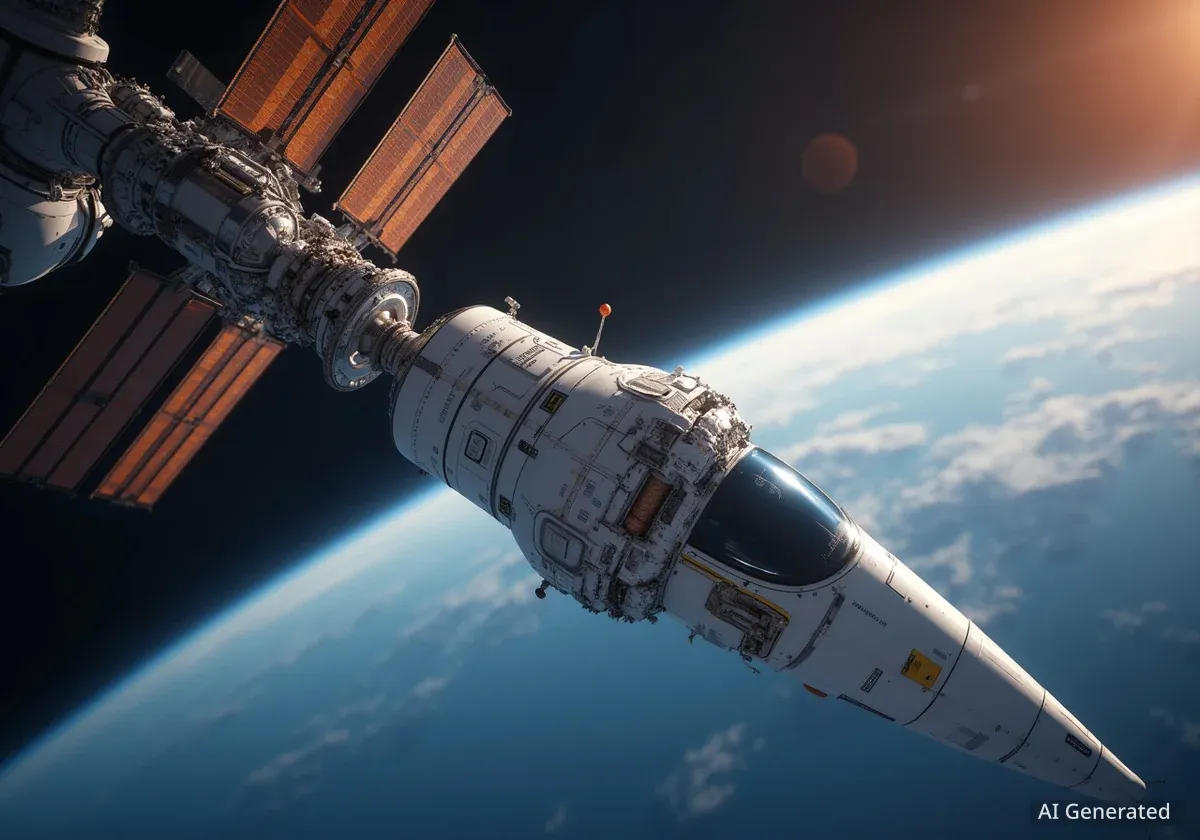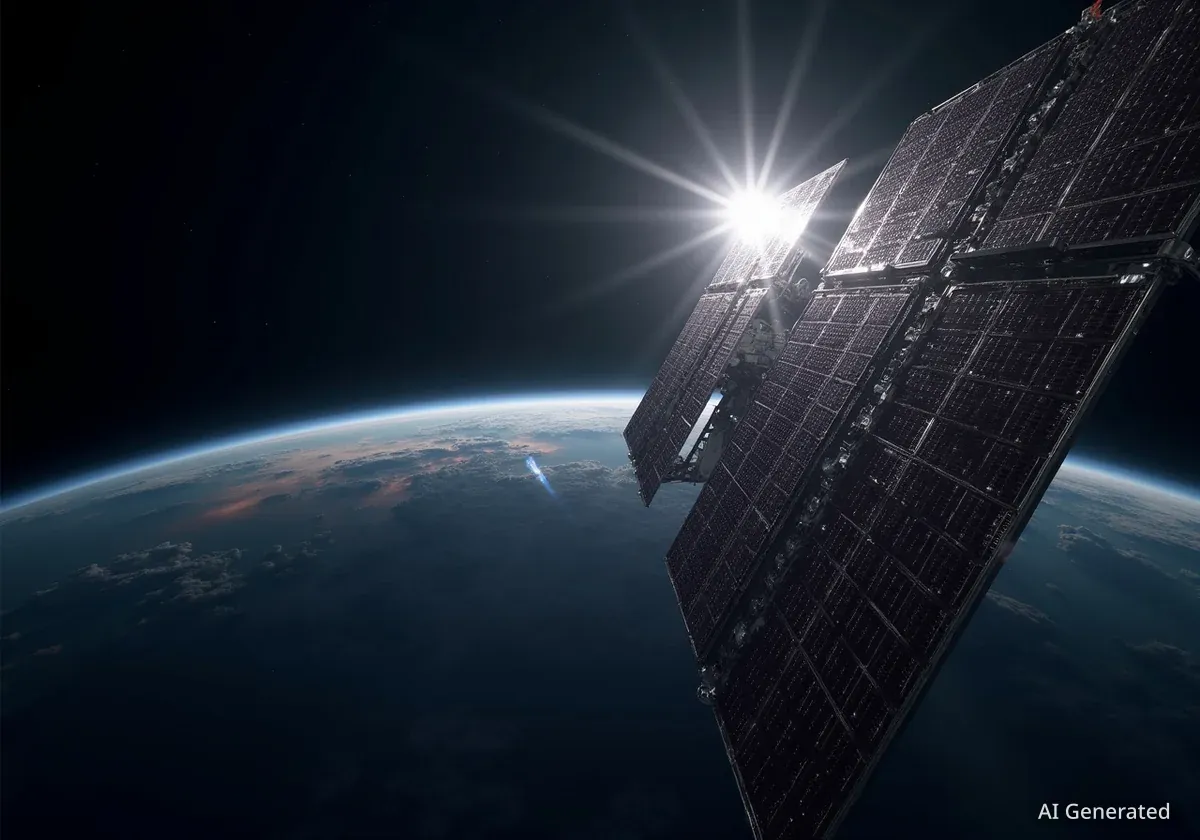A new generation of advanced cargo spacecraft is set to begin service, transforming the logistics backbone of the International Space Station (ISS). Japan is preparing to launch its next-generation H-II Transfer Vehicle (HTV-X), joining an updated fleet that includes vehicles from American commercial partners. This shift marks a significant evolution in how supplies, experiments, and hardware are delivered to the orbiting laboratory.
These new vehicles are designed to be more capable, efficient, and versatile than their predecessors. They will support the station's extended operational life and complex scientific research. The United States and Russia have traditionally managed most resupply missions, but the introduction of these new systems diversifies the international supply chain and enhances its resilience.
Key Takeaways
- A new fleet of cargo spacecraft, including Japan's HTV-X and Sierra Space's Dream Chaser, will soon service the ISS.
- These vehicles offer increased cargo capacity, autonomous docking, and advanced capabilities for science return.
- The new systems enhance the resilience and diversity of the ISS supply chain, reducing reliance on any single provider.
- Japan's HTV-X is poised for its debut, showcasing the country's growing role in space logistics and exploration.
Japan's Advanced HTV-X Prepares for Debut
Japan is at the forefront of this logistical evolution with its H-II Transfer Vehicle-X (HTV-X). Developed by the Japan Aerospace Exploration Agency (JAXA), the HTV-X is the successor to the highly reliable Kounotori (HTV) vehicles, which completed nine successful missions. The final HTV mission, HTV-9, docked with the station in May 2020.
The HTV-X represents a major leap in capability. Unlike its predecessor, which required the station's robotic arm for capture, the HTV-X is designed for fully autonomous docking. This feature streamlines operations and reduces the workload for the ISS crew. The vehicle also includes a separate service module that can remain in orbit for up to 18 months, potentially serving as a platform for hosted payloads or experiments.
HTV-X by the Numbers
- Pressurized Cargo: Up to 4,000 kg (8,800 lbs)
- Unpressurized Cargo: Up to 1,700 kg (3,700 lbs)
- Mission Duration: Can remain docked for up to six months.
- Key Feature: Autonomous rendezvous and docking capability.
This new spacecraft is a critical component of Japan's contribution to the ISS program and its future space exploration ambitions, including participation in the Artemis program and the Lunar Gateway. The successful debut of HTV-X will solidify Japan's position as a key partner in international spaceflight.
American Commercial Fleet Expands with Dream Chaser
In the United States, NASA's Commercial Resupply Services (CRS) program continues to foster innovation. While SpaceX's Cargo Dragon 2 and Northrop Grumman's Cygnus are the current workhorses, a third provider is set to join the rotation: Sierra Space with its Dream Chaser spaceplane.
Dream Chaser is a reusable, lifting-body vehicle that looks like a miniature Space Shuttle. Its most significant advantage is its ability to land on a conventional runway. This allows for a gentle return of sensitive scientific experiments and cargo to Earth, with minimal g-forces compared to capsule-based landings. Researchers can access their experiments within hours of landing, preserving the integrity of delicate biological samples and materials science research.
The Importance of Gentle Return
Many experiments conducted on the ISS, such as protein crystal growth, are sensitive to the high gravitational forces experienced during reentry in traditional capsules. Dream Chaser's runway landing capability is expected to enable new types of research that were previously difficult or impossible to conduct, providing scientists with higher-quality data upon return.
The vehicle's cargo module, named "Shooting Star," is designed to be disposable and can carry external payloads. This modular design provides flexibility for different mission requirements. The introduction of Dream Chaser not only adds redundancy to NASA's supply chain but also introduces a unique capability for science return that has been missing since the retirement of the Space Shuttle.
Evolution of the Workhorse Vehicles
The established cargo providers are also part of this new generation. SpaceX's Cargo Dragon 2, an evolution of the original Dragon, brought significant upgrades to the ISS supply chain when it began flying CRS missions.
Key improvements include:
- Autonomous Docking: Like the HTV-X, Dragon 2 docks directly with the station without needing capture by the Canadarm2, freeing up crew time and robotic assets.
- Increased Capacity: It carries approximately 20% more pressurized cargo volume than its predecessor.
- Refurbishment and Reuse: The capsules are designed for up to five flights, reducing costs and turnaround time between missions.
Northrop Grumman's Cygnus spacecraft has also undergone steady upgrades. While it remains a disposable vehicle that burns up on reentry, its recent versions feature increased size and mass capacity. Cygnus plays a vital role in waste disposal for the ISS and has demonstrated secondary capabilities, such as performing station reboosts to adjust its orbit.
"Having a diverse fleet of spacecraft from international and commercial partners is essential for the long-term health and productivity of the International Space Station. Each new vehicle brings unique capabilities that expand our ability to conduct groundbreaking science in orbit."
The Future of Low-Earth Orbit Logistics
The arrival of this trio of new and upgraded cargo vehicles marks a pivotal moment for the ISS and the future of commercial activity in low-Earth orbit (LEO). With the station's operations extended, a robust and redundant supply chain is more critical than ever.
This logistical network is not just about supporting the ISS. The technologies and operational experience gained from these missions are laying the groundwork for future commercial space stations and deep-space exploration. Companies like Sierra Space envision a future where Dream Chaser services multiple destinations in LEO. Similarly, the capabilities of HTV-X are directly applicable to supporting the Lunar Gateway, a planned outpost in orbit around the Moon.
As humanity prepares to return to the Moon and look toward Mars, the lessons learned from resupplying the ISS with this new generation of spacecraft will be invaluable. The development of a competitive, international, and highly capable logistics infrastructure is the first step toward creating a sustainable human presence beyond Earth.





